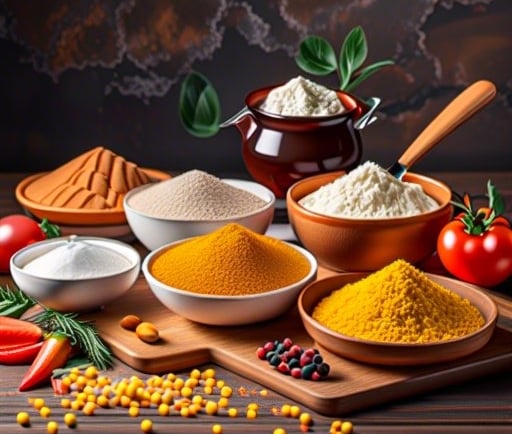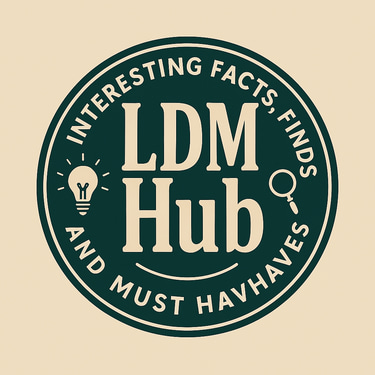The Maltodextrin Menace: Dangers and Foods to Avoid
HEALTH TIPS


Maltodextrin is a common food additive that is used in a wide range of processed foods. It is derived from starch and is often added to foods as a thickener, filler, or preservative. While it is generally recognized as safe by regulatory authorities, there are some concerns about its potential health effects.
One of the main concerns about maltodextrin is its impact on blood sugar levels. Maltodextrin has a high glycemic index, which means that it can cause a rapid spike in blood sugar levels when consumed. This can be particularly problematic for individuals with diabetes or those who are trying to manage their blood sugar levels. Consuming foods high in maltodextrin can lead to a sudden surge in blood sugar followed by a crash, which can leave you feeling tired and sluggish.
In addition to its impact on blood sugar levels, maltodextrin has also been linked to digestive issues. Some individuals may experience bloating, gas, or diarrhea after consuming foods that contain maltodextrin. This is because maltodextrin is a type of carbohydrate that is not easily digested by the body. Instead, it is broken down by bacteria in the gut, which can lead to digestive discomfort for some people.
If you are looking to reduce your intake of maltodextrin, it is important to be aware of the foods that commonly contain this additive. While it is impossible to completely avoid maltodextrin, as it is found in many processed foods, there are certain foods that tend to have higher levels of this additive. Some examples include:
- Processed snacks such as chips, crackers, and pretzels
- Sweetened beverages such as sodas and fruit juices
- Instant mashed potatoes and other packaged side dishes
- Meal replacement shakes and protein bars
- Certain types of yogurt and other dairy products
- Sauces, dressings, and condiments
By being mindful of the foods that commonly contain maltodextrin, you can make more informed choices about your diet and reduce your overall intake of this additive. It is also worth noting that maltodextrin is often used as a bulking agent in supplements, so if you take any vitamins or other dietary supplements, it is a good idea to check the ingredient list for maltodextrin.
While maltodextrin is generally considered safe for most people, it is always a good idea to listen to your body and pay attention to how certain foods make you feel. If you notice any adverse effects after consuming foods that contain maltodextrin, it may be worth speaking with a healthcare professional or registered dietitian for further guidance.
In addition to the concerns mentioned above, another potential danger of maltodextrin is its effect on gut health. Maltodextrin is classified as a prebiotic, which means it can serve as a food source for beneficial bacteria in the gut. However, research has shown that maltodextrin can also promote the growth of harmful bacteria, leading to an imbalance in gut flora.
This imbalance can have negative effects on digestion and overall health. Studies have found that excessive consumption of maltodextrin can increase the risk of gastrointestinal issues such as bloating, gas, and diarrhea. It can also disrupt the delicate balance of bacteria in the gut, potentially leading to more serious conditions such as irritable bowel syndrome (IBS) or inflammatory bowel disease (IBD).
Furthermore, the high solubility of maltodextrin can contribute to dehydration. When consumed in large amounts, maltodextrin can draw water into the intestines, leading to loose stools and increased water loss. This can be particularly problematic for individuals who are already prone to dehydration or those with certain medical conditions such as kidney problems.
Moreover, some studies have suggested a potential link between maltodextrin consumption and weight gain. Due to its high glycemic index, maltodextrin can cause a rapid increase in blood sugar levels, which in turn triggers the release of insulin. Insulin is a hormone that promotes fat storage, and prolonged exposure to high levels of insulin can contribute to weight gain and obesity.
It is important to note that the potential dangers of maltodextrin can vary depending on individual health conditions and dietary needs. While some people may tolerate maltodextrin without any adverse effects, others may experience discomfort or health issues. As with any food additive, it is recommended to consume maltodextrin in moderation and be mindful of its potential risks.
Foods to Avoid
If you are looking to reduce your intake of maltodextrin, here is a list of common foods that often contain this additive:
- Processed snacks: Many processed snacks such as chips, crackers, and pretzels often contain maltodextrin as a filler or thickening agent. Check the ingredient list before purchasing these products. Additionally, be cautious of flavored popcorn, as it may also contain maltodextrin.
- Instant soups and sauces: Maltodextrin is commonly used in instant soups and sauces to enhance flavor and texture. Opt for homemade or fresh alternatives instead. You can easily make your own soup or sauce using fresh ingredients and natural seasonings.
- Sweetened beverages: Some sweetened beverages, including sports drinks, flavored waters, and powdered drink mixes, may contain maltodextrin. Choose unsweetened or naturally sweetened options instead. Consider infusing water with fresh fruits or herbs for a refreshing and flavorful alternative.
- Meal replacement shakes: Maltodextrin is often used as a source of carbohydrates in meal replacement shakes. Look for alternatives that use whole food ingredients instead. You can make your own nutritious and filling shakes using ingredients like fruits, vegetables, and protein powder.
- Processed meats: Certain processed meats, such as sausages and deli meats, may contain maltodextrin as a binder or preservative. Opt for fresh, unprocessed meats instead. Visit a local butcher or supermarket with a fresh meat section to find a variety of unprocessed options.
- Baked goods: Maltodextrin can be found in some baked goods, including bread, pastries, and cookies. Consider making your own homemade versions using whole food ingredients. This way, you have control over the ingredients and can use healthier alternatives like whole wheat flour or natural sweeteners.
- Dairy products: Some dairy products, such as flavored yogurts and ice creams, may contain maltodextrin. Choose plain or unsweetened options and add your own flavorings. You can mix in fresh fruits or a drizzle of honey to enhance the taste without the need for added additives.
- Condiments and salad dressings: Maltodextrin is often used as a thickening agent in condiments and salad dressings. Look for products that use natural thickeners or make your own at home. You can easily create your own dressings using ingredients like olive oil, vinegar, herbs, and spices.
It is important to note that not all products within these categories will contain maltodextrin, and the presence of this additive can vary depending on the brand and formulation. Always check the ingredient list and do some research if you are unsure. Additionally, it's worth mentioning that while maltodextrin is generally considered safe for consumption, individuals with specific dietary restrictions or sensitivities may need to avoid it. Consulting with a healthcare professional or registered dietitian can provide personalized guidance on managing your diet and making informed food choices.
